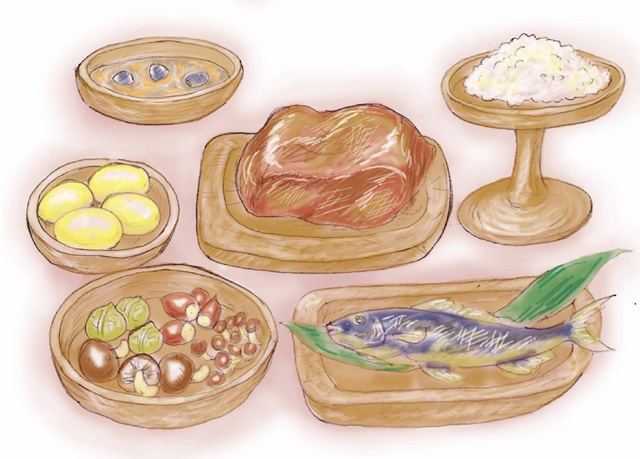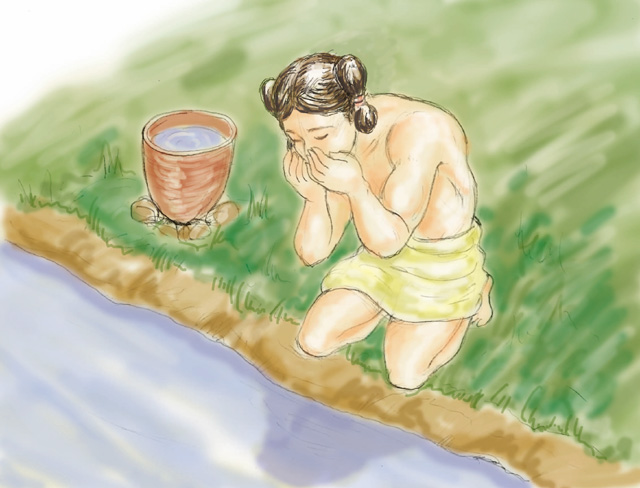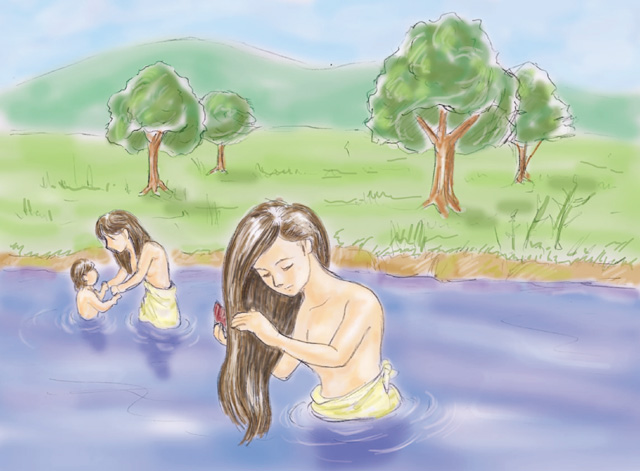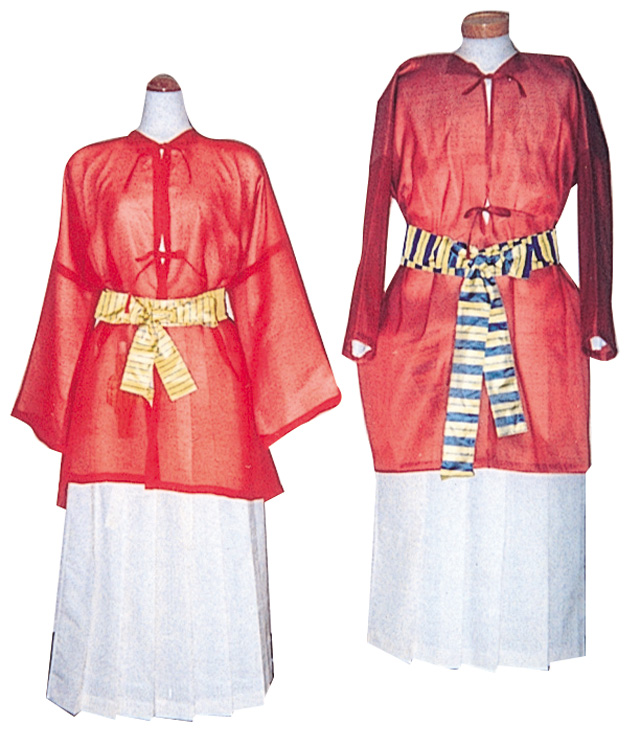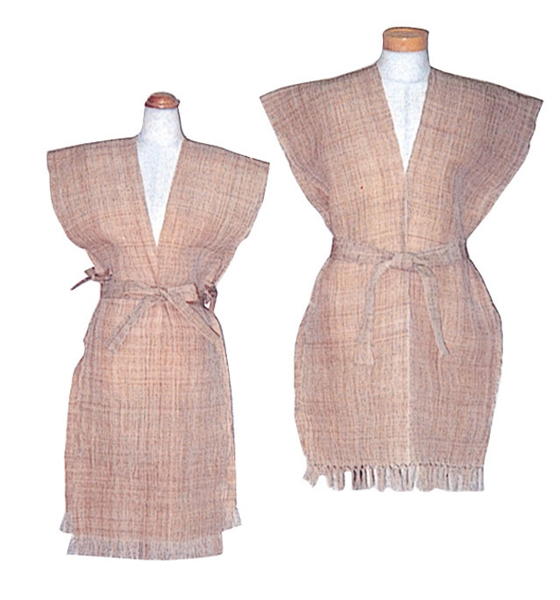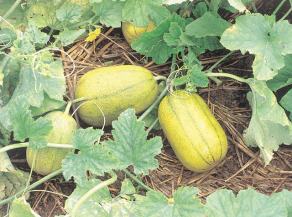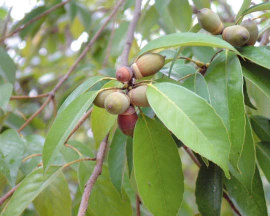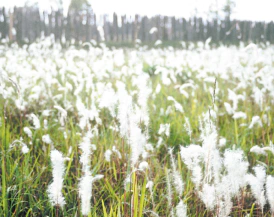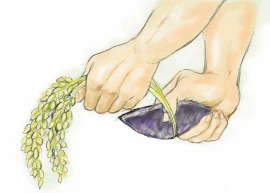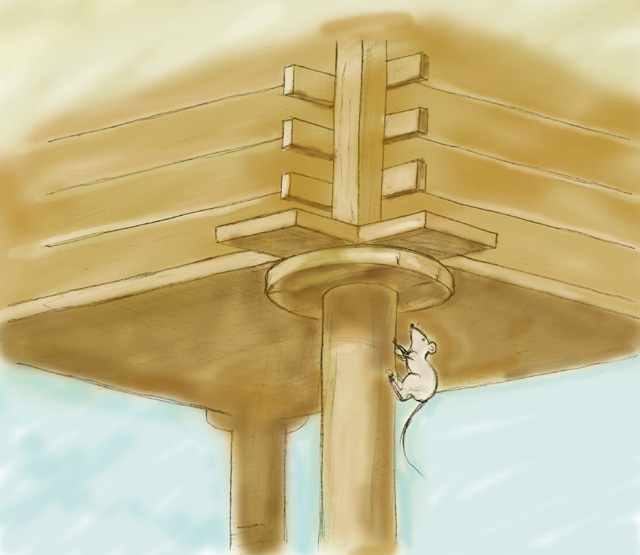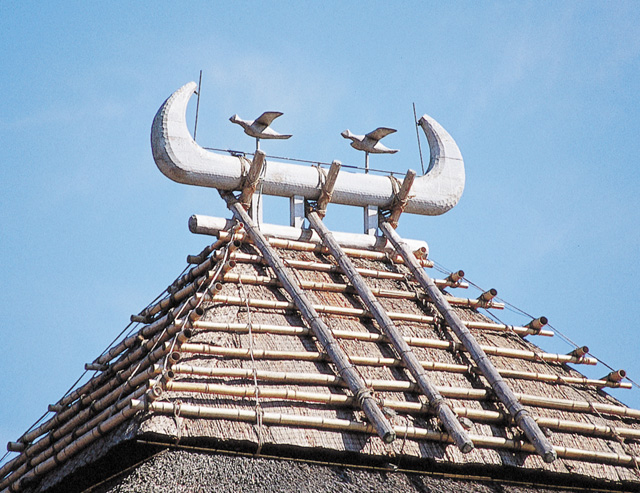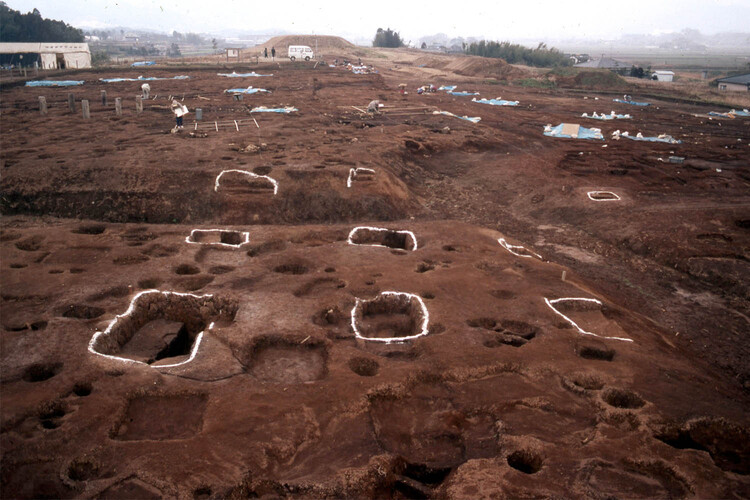Yayoi Trivia
-
In the Yayoi period, rice farming was brought into Japan from China and Korea. In addition to rice, they ate various marine and mountain products.
Wheat, millet, beans, gourd, acorns, walnuts
Boars, chickens, deer, bears, raccoon dogs, dogs,
Silver carps, carps, sharks, sea basses, horse mackerels, pond snails,
river snails, Japanese freshwater clamsThe Yayoi people would probably boil or broil them and eat with his fingers.
-
Many spots gushing abundant spring water were found in Yoshinogari. It seems that the Yayoi people simply fenced the point and used it for drinking water. A well built in the late Yayoi period through the early Kofun period has been found. Being discovered at other ruins in Japan, a site of a well might be found in Yoshinogari, also.
-
Any site of restroom has not been found in the Yoshinogari ruins. Excrement was probably thrown into the circular moats, for parasitic worms living only in human body were discovered in circular moats at other ruins. The Yayoi people are believed to have bathed in the river since there was no bathroom in this era.
-
According to the ancient Chinese chronicles, a man just wrapped cloth called Yokohabai, and a woman pulled over clothes called Kantoi. Some pieces of linen and silk were found in the burial jars at the Yoshinogari ruins. It is seemed that materials and shapes of attire depended on social standing in those days.
-
No letters have been found thus far. Neither has language. But letters and language certainly existed as the ancient Chinese chronicles describe; Notes were exchanged, and There is an interpreter, when negotiating and exchanging with Japan. In those days, language differed with regions even within Japan, and a common language as current Japanese had not supposedly formed.
-
Colorful flowers like today seem to have been less. Deep forest of pasanias, evergreen oaks, sawtooth oak, and camphors, and grassy plain of Japanese pampas grass and lalang might have stretched.
The general appearance of plants of the day has been uncovered by examining many seed, fossils and wooden tools and structures at the ruins considering the change of plants distribution in the northern part of Kyushu. Based on these researches, the Park has planted trees and plants that probably existed in the Yayoi period.
-
As for climate, opinions vary among researchers. Condition of plants at the time, world geography and environmental issues influencing climate should be considered. At present, it is mostly believed that it was about 1 lower than the present temperature.
-
A stone knife is thought to have picked the tip of a rice ear, not to cut fish and meat. It was confirmed by the fact that examination of the edge proved fat contained only in rice. Holding a stone knife with a palm, people picked the tip of an ear one by one. The tool to pick one ripe ear was probably necessary, not a scythe which reaps at the root, because nearly wild rice of the time ripened sporadically and only ripe ear was picked.
-
It is a circular or rounded-corner rectangular board set at the joint between a post and floor of a high-floored storehouse. It is thought to have prevented a mouse from climbing up the ladder coming into a storehouse to save stored food, silk products and other goods. A Nezumi Gaeshi, Mouse Repeller in Yoshinogari which was probably made of a big circular board split into two has been found, which indicates how hard people protected important provisions.
-
Researchers had known for a long time that valuable ruins had lain in this ground. Through excavation research with industrial housing complex development started in 1986, the Yoshinogari ruins were proved to be of extremely high academic value.
-
A proof that Yoshinogari was once Yamatai Kingdom has not found. But the sites of structures were very similar to Yamatai Kingdom described in the ancient Chinese chronicles. On that point, we can grasp the image of Yamatai Kingdom through the reconstructed structures in Yoshinogari.
-
It is very difficult to take a census of the population of those days. Basically inferring the number of tombs and residence, environment including deforestation nearby should be considered because fuel was wood at that time. Also there are many things taken into account, for example, how much food people of the day ate a day and whether it was possible to satisfy the needs. As a result of various researches, it is thought that about 1,200 people lived inside the outer circular moat and about 5,400 in the whole nation-state around Yoshinogari in the golden age.
-
It seems very short compared to present. People are thought to have died before 40 years old on an average. Especially the death rate of children was likely high because of malnutrition and no hospitals. This is also inferred from the fact that 40% of burial jars in Yoshinogari were for children.
-
During the excavation process, the sites of tombs and poles appear after uncovering accumulated soil of the ruins. The soil around the sites of tombs and posts holes are darker compared to other parts of the ground, and quality of soil is different, which tells us where the sites of the structures were.
-
Around the beginning of the 4th century from the end of the 3rd century, the Yoshinogari village became suddenly deserted.
Some say
A small village around the Yoshinogari village remained.
Daily earthenware was thrown into the circular moats.For reasons above-mentioned, people might have left this land of their free will. It is assumed that people in Yoshinogari moved in the shift of society; an individual had great power and wealth in the following Kofun period.

